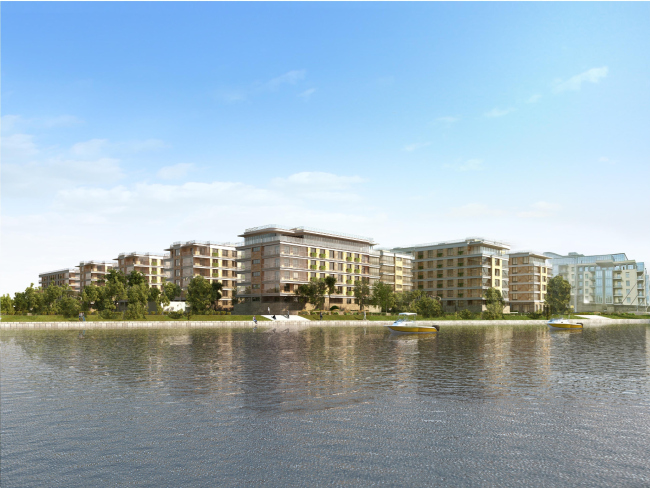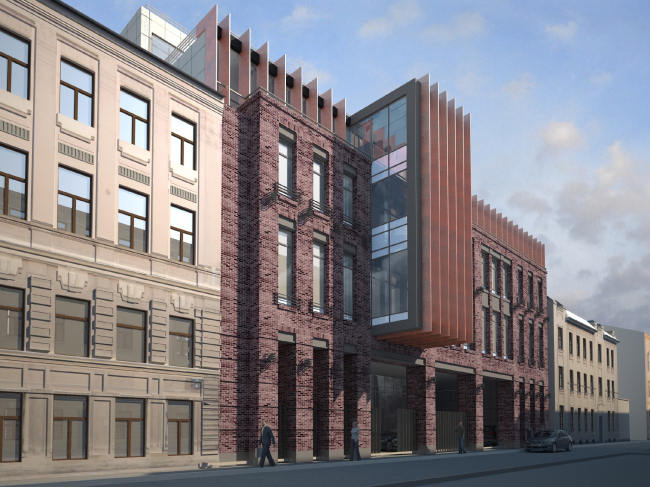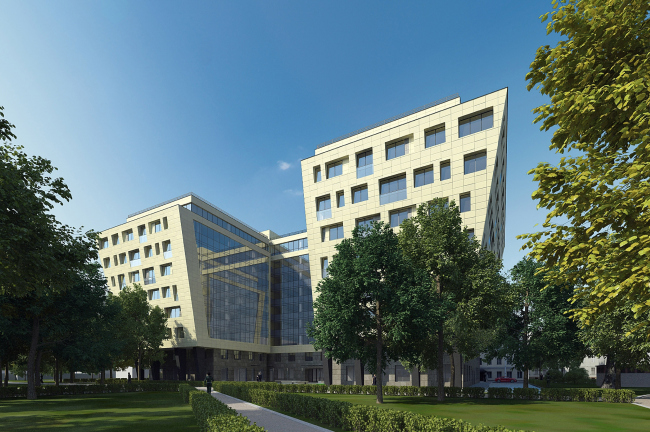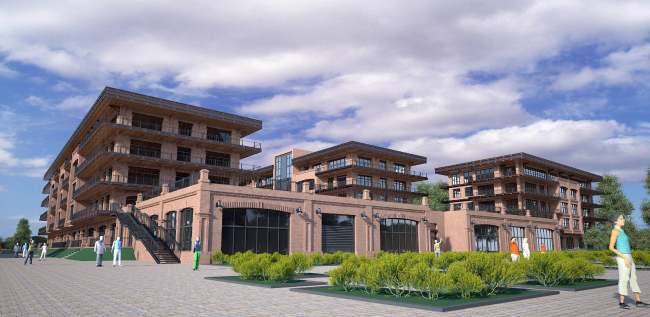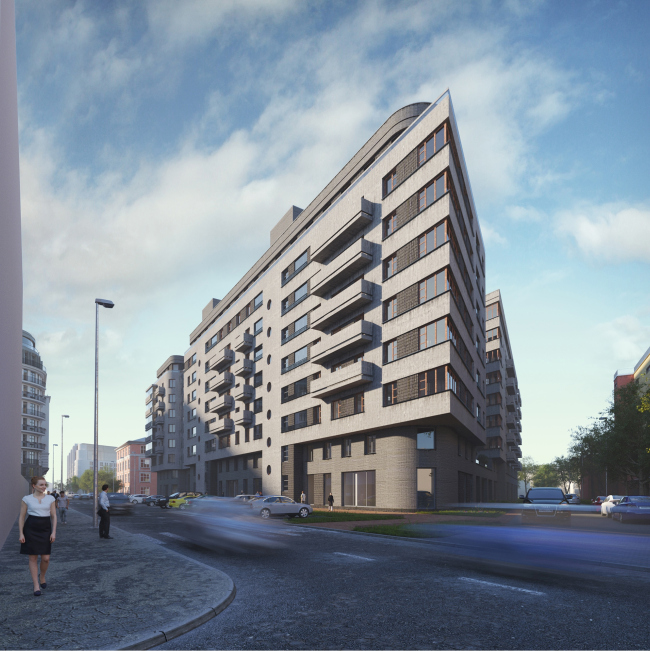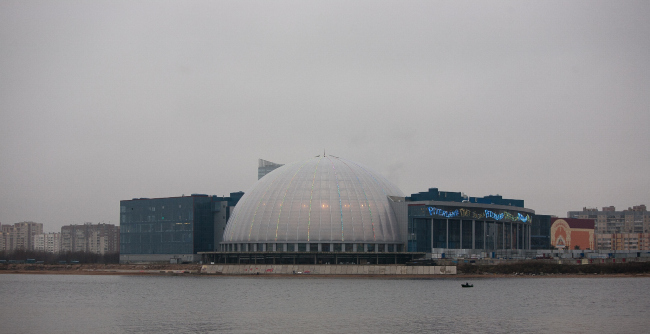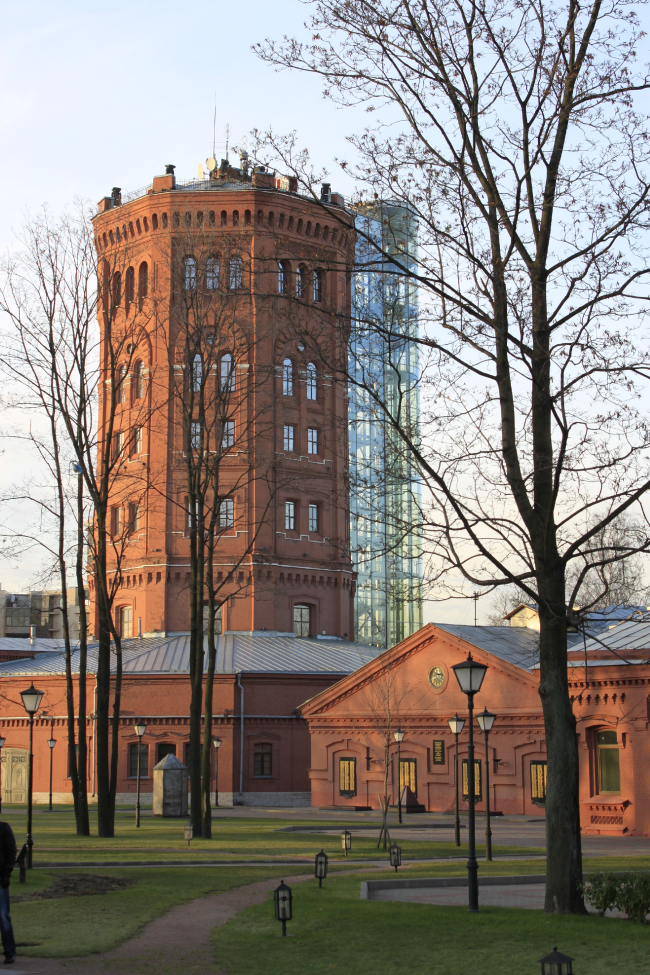|
Published on Archi.ru (https://archi.ru) |
|
| 20.12.2019 | |
|
Evgeny Podgornov: “You need to make your projects visible” |
|
|
Alyona Kuznetsova |
|
| Architect: | |
| Eugene Podgornov | |
| Studio: | |
| INTERCOLUMNIUM | |
|
The leader of Saint-Petersburg’s architectural company Intercolumnium explains why his company’s portfolio includes projects ranging from hi-tech to historicism, discourses upon high-rise landmarks, about the clients, and about the sources of the drive that the city needs. “Krestovsky De Lux” housing complexCopyright: © IntercolumniumArchi.ru: It’s been 27 years since Intercolumnium was founded; now the company has more than a hundred employees. How did it all begin? You surely must have a story to tell. Evgeny Podgornov: Yes, we’ve been around for quite a while; one could do a prison sentence within this time, and get released... (laughs). After I graduated from the architectural department, I worked in the LenNIIP Gradostroitelstva institute, which fell into decline in the 1990’s; there were no federal orders, and we were all disbanded. And it came as no surprise that we decided to start an architectural company of our own. I was having a drink with a friend of mine, and we suddenly had such an idea. That guy emigrated to the USA later on... The name is Latin, and it doesn’t start with an “A” – is that because you were buzzed when you came up with it? This name is a test of sorts. I believe that your company’s name must be either as simple as possible, just like any of the world’s biggest brands, so that people can remember it easily – or it must be something that a person must make an effort to pronounce and memorize, so that this word would intrigue them. Intercolumnium is essentially a space between the columns, a term from the classical architecture. In the Russian terminology, there is no special word for it, so we keep using the Latin term. And, along the way, people would mispronounce our name in all sorts of hilarious ways! At one time, our employees even kept a list of those mispronunciations: “intercommunism”, “intercolumbism”, and so on. So, how did your independent career begin? Just like it did for many others – we did a couple of private residences, and a couple of interior design projects. Then we got our first big client: there was a new development company that needed a project, and this is how we got into business. Back then, starting was easier because nowadays the clients are more exacting and they rarely trust young architects. Step by step, we increased our volumes, our equipment, and our staff. I must say that it’s hard to organize your first ten people, and then you develop a single principle of your work, and numbers don’t matter because this principle applies for everyone: we regularly discuss all of our projects, sit down together, consider them from different viewpoints, and such like. Intercolumnium office, projectCopyright: © IntercolumniumAre these multiple projects in your portfolio also part of your principle? How do you achieve such versatility: thanks to different clients, different “hands” in your company, or just thanks to the breadth of your horizon? Probably, because of the latter. I do not perceive architecture as a means of self-realization within the limits of this or that branch. Architecture is like fashion: it changes every 10-20 years: we see the hot trends come and go, and we see the clients’ tastes going through cycles, we see the epochs and movements. Pretty much everyone wants to do new trendy projects, but the architect first of all must proceed from the location, and from the task that the client sets for him. It’s about creating an interesting high-quality product, and not get stuck in a rut of this or that style, endlessly replicating it. Based upon this principle, you will get the desired versatility. Can you describe your working routine? Are there any set processes for going from a sketch to a full-fledged project? What is your starting point: the context, the limits imposed by the land site, or your own idea, drawn on a napkin? Many of our projects are thoroughly checked in terms of their imagery, and some do get born at once, literally drawn on a napkin, like you said. A vivid example of the latter is the housing complex “Fusion”, and the client is still keeping that napkin. A lot of our sketches are indeed done momentarily, and there is a lot of kick and drive about it. And I really enjoy it because otherwise it’s getting quite boring if nobody calls you for a week, asking to come and see the land site and voice your thoughts on it. “Fusion” housing complexCopyright: © IntercolumniumAn architect basically works to order: we are not artists; we do not create concepts and then run around the city trying to sell them. But then again, sometimes it is indeed the case: at our risk – we sometimes can afford it – we can develop this or that project and approach the potential client showing him how it could be. Sometimes it does work out. As part of my creative method, I sometimes use this technique: I try to put myself in the position of the end consumer – would I want to live in such a place? And sometimes after that a tremendous transformation occurs – both stylistically and in other respects. Which of your projects would you consider to be your signature ones? Out of the recent projects, these are the housing complexes “Krestovsky DeLux” and “Privilegia”; I also think that the brick yacht club on the Bezymyanny Island was important to us. “Krestovsky De Lux” housing complexCopyright: © Intercolumnium“Privilegia” housing complexCopyright: © IntercolumniumThe yacht club on the Krestovsky Island, Saint PetersburgCopyright: © IntercolumniumAnother successful project was the housing project “Mendelson”, near the “Krasnoe Znamya” factory. In that project, we really did a thorough job of creating constructivist architecture: we made mosaic panels next to the entrance, rock-face-in-concrete elevator lobbies, a thousand and a half suprematist printed pictures in the corridors, and we even designed the doorbells – we ultimately got a very stylish thing. “Mendelson” housing complexCopyright: © IntercolumniumOut of our earlier projects, I would name the entertainment center Piterland, which still to this day boasts the largest glued-wood dome in Europe, 90 meters in diameter. The entertainment compex with a water park, a hotel, a yacht club, and the Piterland amusement parkCopyright: © IntercolumniumA considerable portion of your implemented projects is situated in the historical center of Saint Petersburg, and in the Krestovsky Island – one way or another, these are high-end projects, each one of them. Does that mean that you are more interested in designing for the elite classes? I am interested in designing lots of things, but there are subtleties in everything. When it comes to mass construction, the architect’s task is to create the environment and the objects inside of it that are in harmony with one another. I believe it’s better to build pinpoint high-rises, making sure that there is more air, more greenery, and more unbroken routes between them. Here, however, it’s pretty rarely the case: they build crazy square-shaped courtyards, building as densely as possible on the land plot that they’ve got, then the yard may get a piece of a school or a kindergarten, which may make it look nice and spacious, but the territory is still locked along the perimeter, so it’s a hoax anyway. The new highways, and, specifically, the Western High-Speed Diameter, did a lot of positive difference to this city, giving it more drive. A think it would be a great thing if next to the Lahta Center appeared a whole cluster, like Defence in Paris or Moscow City in Moscow. A city needs high-rise landmarks. A tower is a great thing as such because if you, let’s say, find yourself in a remote neighborhood, such as Kamenki or Pargolovo, you see this landmark, and you at once get your bearings, which is convenient. Yet another business center like this, with a stadium, could appear in the area of the Vantovy Bridge, it wouldn’t hurt anyone. High-end housing construction, on the other hand, is quite a different thing. What matters here is the location. The problem with our city is that there are land plots lying next to each other and owned by different people, but there is no common understanding of their development. It’s very seldom that somebody tries to take into account what his neighbors did. This “early bird” principle is, regretfully, pretty effective, and it leaves its mark on the aura of Saint Petersburg construction. One positive example here is the house on the Esperova Street. This is like homage, as well as a game and a joke: since Evgeny Gerasimov built his “Venice” house here, I thought that “Catalonia” would be just as appropriate. I think that project was quite a success. A housing projectCopyright: © IntercolumniumSmall houses of such kind are essentially craftwork, and they cannot be duplicated. The classic Saint Petersburg consists of bright buildings with a prominent style, and a frontal construction, all joined by firewalls. The most important thing here is to understand the tectonics and the scale. Ruining the consistency of the scale is bad, of course, but buildings of different styles within one street sure lighten things up. What other principles do you use for working in the historical center? Designing for the city center, it is important not to obscure your neighbors, comply with all of the rules and regulations, and at the same time be able to make your own architectural statement. It was believed at one time that the best construction for the city center must be as neutral as possible. , for example, has a passage in it to the effect that “the new buildings must not be visible from open city spaces”. But what is it that we must design then, making it “invisible”? Phantom houses? You need to make you projects visible, and you need to make them into something that you can be proud of. With time you begin to realize that a reserved ascetic building is sometimes more valuable than a bright one, all covered in decoration work. But then again, there is another extremity – to think that decor is “bad taste” for a modern architect, and that everything needs to be done solely in modern forms. There are buildings that, because of the lack of decoration, look like sketches or like they are incomplete, I do not understand that. It’s just that you don’t have to overdo it. “Apollo” business center, Saint PetersburgCopyright: © IntercolumniumIf you take half of the buildings in the center of Saint Petersburg, and strip them of their entire decor, what you will get is just a wall with windows, where used to be rock-face patterns, fasciae, and cornices, and you’ll be left with the window-to-pier proportions 2:1. In a modern building, you always want to make the windows as big as possible, preferably reaching down to the floor, and reduce the mass of the walls – but if you are neighboring on the historical construction, these things are no good, it’s better to make to double windows. Today each floor is meant to make money, and the ceilings get lower, the piers get narrower, and the proportions become more constricted – and it just does not make any sense to decorate them the way they used to. The classic version of the facade does not work anymore; you need to be looking for something else. Yet, at the same time, this trend to smother any project just in order to keep the city the way it was a hundred years ago does not make much sense to me. And, again, for a fact, a little over a hundred years ago, this city was being rebuilt very actively: let’s say, the land owner became richer, wanted a better house, and he would tear the old one down without thinking twice about it. Once the new technologies appeared – concrete intermediate floors, for example – the entire Petrograd side was rebuilt beyond recognition within twenty years. And after that the historical buildings were constantly built up. And now they want to ban virtually any new construction and freeze this city. But this is wrong – a city must develop. “Water Universe” museum. The reconstruction of a water towerCopyright: © IntercolumniumHow do you work with your clients? Do you argue with them sometimes, do you stand your ground? The clients became more exacting, they’ve been around the world, they’ve seen things, and many of them know exactly what they want. There is also a positive trend for simplification; now everyone calculates the economic performance of their projects, and all these ideas of cottages on the sloping roofs, and other crazy-expensive things are history now, thankfully. From the economic standpoint, however, the situation in this country is pretty tense: there is a feeling of depression, the laws keep changing all the time, and it takes the clients forever to make a decision. In order to make it to the implementation stage, you need to have a financial reserve, and you need to be able to do things very quickly – I mean both to design and to build. If you start a construction without having a clear plan, you are sure to run into enormous expenses. And you need to make absolutely sure that the client is ready to invest in the facade decoration solutions – be that in the historical center, or anywhere else, for that matter. Quite often this is precisely the case: the building is all but ready, we start the decoration work, and it suddenly turns out that we’ve run out of money. And then you start cutting the costs and saving on everything. Another thing that is important is a sturdy concept. If there is a prime idea, everything falls into place very quickly; if there isn’t, you may fuss about until the end of time, still getting nowhere. A vivid example: the landscaping of the Ushaika River in the center of Tomsk. The reconstruction of the bank of the Ushaika RiverCopyright: © IntercolumniumFor three years, Gasprom was rummaging Tomsk for a suitable architect, and they kept drawing pictures on the level of some caricature palaces and rail posts... We came up with an ultramodern concept within a month, showed it to the main architect of the city, and he was delighted, they immediately began to implement it. All because there was a prime idea that everyone took to. How would you characterize your current working situation: where are you going to, and what’s your end game? Our end game is to keep on doing various interesting projects! And it’s very important that each project must ultimately have a message, a clue to making it noticeable and interesting. Evgeny PodgornovCopyright: © Intercolumnium |
|
